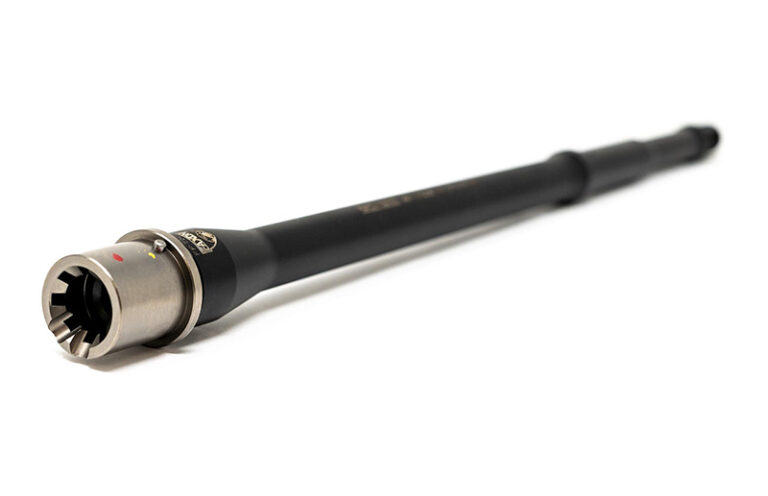
You’ve probably heard about .223 Wylde, but what is it, what is it good for and should you be taking advantage of it?
Most AR-15 shooters are aware that .223 Remington and 5.56 NATO are not exactly the same, and that it’s generally considered prudent to never fire the latter in a rifle chambered for the former. Because of this, most ARs today are designed with 5.56 NATO chambers to allow the safe firing of either cartridge. The story doesn’t end there, however, as now many rifles are available with a .223 Wylde chambering as well.
Here we’ll be going over exactly what a .223 Wylde chamber is, why it was created, if you should consider using one and finally our top six picks for the best .223 Wylde barrel options.
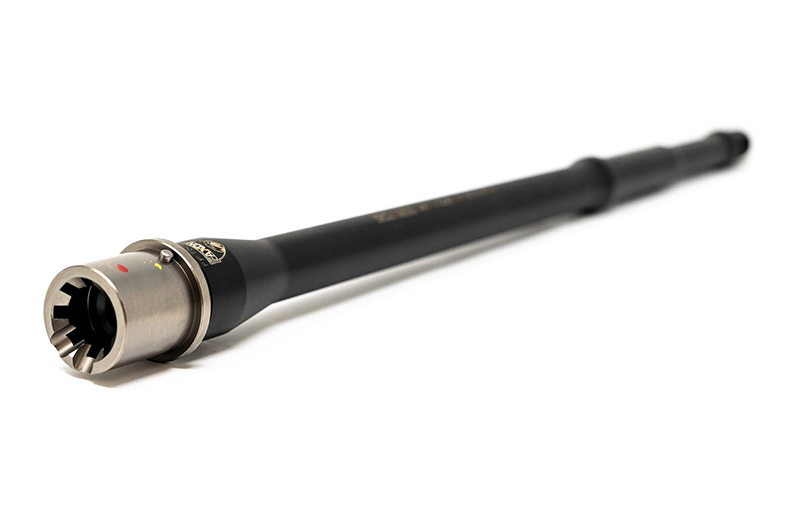
What Is .223 Wylde?
.223 Wylde is a chamber dimension, developed by gunsmith Bill Wylde of Greenup, Ill., which aimed to balance the differences between the 5.56mm NATO and .223 Remington chamber dimensions.
Why do this? To understand, we need to dive a little deeper into the differences between .223 Remington and 5.56x45mm NATO.
In the beginning, the earth was void. Some years later, the .223 Remington was developed as the cartridge for the AR15/M16 rifle. Some years after that, FN Herstal developed the 62-grain SS109 bullet, and their loading was adopted as the standard 5.56x45mm NATO load.
Along with the SS109/M855 load, NATO also adopted a uniform 5.56mm chamber dimension. Specifically, the freebore diameter as well as the neck and shoulder diameters are the relevant measurements. The freebore is the section of the barrel right before the lands and grooves.
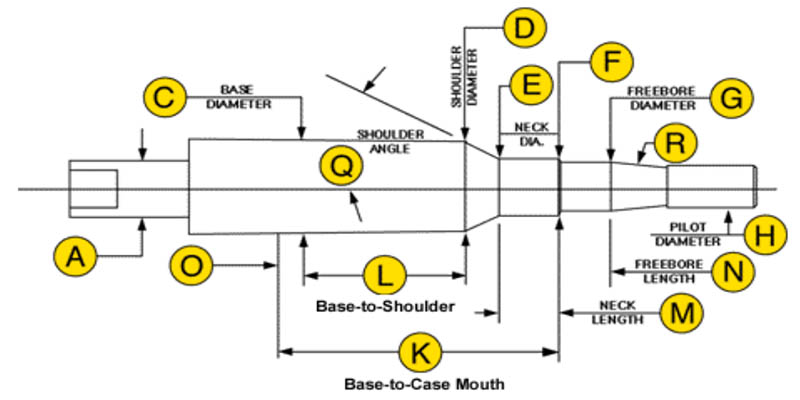
When determining the standard NATO chamber dimensions, a larger freebore was chosen to increase reliability, as the extra space helps to accommodate for variances in ammunition size as well as fouling. Because the chamber was developed for military carbines and machine guns, this makes a lot of sense.
Further (and this is where the pressure aspect begins to matter), the various projectiles available for 5.56mm NATO ammo have different shapes and overall lengths which can affect the buildup of pressure (the pressure curve) behind them as well as how they engage the rifling.
A 64-grain tracer, for instance, has a much different ogive than a 55-grain FMJ. This means that the two cartridges will have different pressure curves even if the powder charges are the same. As a result, the pressure generated by some 5.56mm NATO loads may be more than a .223 chamber can handle.
Some testing has demonstrated an increase in chamber pressure when firing 5.56mm NATO in .223-chambered barrels, though typically only to about 60,000 psi.
Has a 5.56mm cartridge ever ruptured a .223 Remington gun? I have yet to find a real-world documented example where genuine factory 5.56mm ammo has blown up a gun. Kabooms have happened, but usually due to Bubba's handloads.
It is certainly true that firing 5.56mm rounds in a gun with a .223 chamber will accelerate wear on parts…if you shoot enough, but most don't. The most common side effect appears to be popped primers.
As to accuracy…that's very hard to pin down.
There are so many variables involved in mechanical accuracy that definitively stating that 5.56mm ammo is less accurate when fired from a .223 chamber (or vice versa) is a difficult proposition. Dimensionally, a .223 chamber has a tighter freebore. On paper, this would suggest greater accuracy, but how that translates to reality is hard to quantify.
Enough people have claimed that they get decreased accuracy, but to say so conclusively requires eliminating variables (twist rate, chamber dimension, bullet, powder and primer) which to my knowledge has never been done.
The issue is further confused by the fact that plenty of barrels, chambers and ammunition are incorrectly labeled. Just because something says “5.56” on it, it doesn’t necessarily mean that it was manufactured to exact official NATO specifications.
As mentioned, .223 Wylde chambers combine the best aspects of both .223 Rem. And 5.56 NATO chambers, but what exactly does that bring to the party? In theory, it will provide the increased safety and reliability of a 5.56 chamber and the accuracy of a .223 chamber. So, if you build a rifle using a quality Wylde barrel with a chamber that's been cut correctly, it means that you should never really have to worry about the differences between .223 Remington and 5.56 NATO ammo when using it.
What Is .223 Wylde Best For?
What kind of AR build would benefit the most from a .223 Wylde chamber? Two scenarios immediately come to mind.
First is any rifle where you, the shooter, are going use a lot of ammunition loaded with long-for-caliber projectiles.
Hunters and match shooters both favor heavier, more aerodynamic bullet shapes, and there's also something to be said for the superior terminal ballistic properties for defensive purposes…especially compared to green tip 5.56!
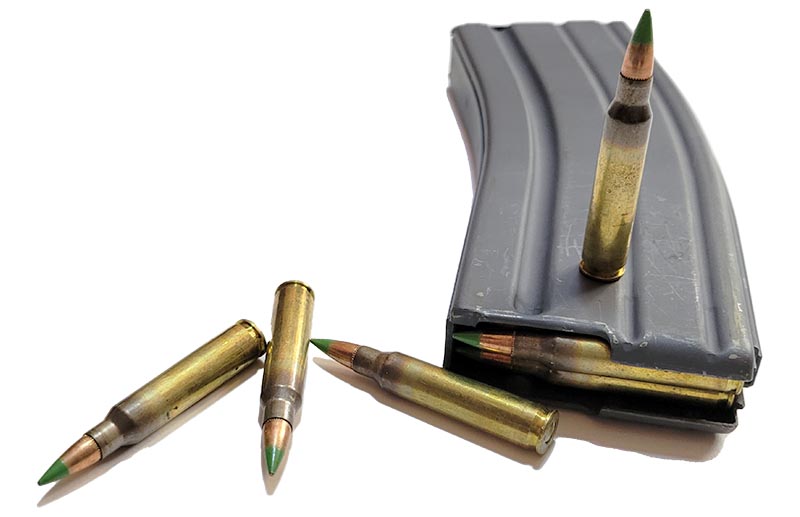
Second is if you're going to feed your gun a dog's lunch of ammunition. We've all been there. Some Tula .223, some Winchester 5.56 55-grain, a bit of something else, whatever you can get cheap, and who knows how close to spec any of it is.
In that instance, a .223 Wylde chamber will keep you from having to worry about exceeding the pressure limit of your chamber or experiencing reduced accuracy.
Why Would You NOT Want A .223 Wylde Barrel?
There are two distinct reasons not to opt for a .223 Wylde barrel.
First, the good Wylde barrels tend to be a bit more expensive than barrels with 5.56 NATO or .223 Remington chambers. If money is tight, it will likely be more useful if put toward other areas of your build.
Second is if you have a specific rifle built for a specific purpose that you only load with specific ammo that won’t benefit from a Wylde chamber.
For instance, classic .223 hunting and varmint loads (such as 55- and 62-grain soft points) don't really require a .223 Wylde chamber, nor does shooting typical 5.56mm NATO loads (55-grain and 62-grain ball) in a gun with an actual 5.56mm chamber. If that constitutes most of your AR shooting, a Wylde chamber may not have much to offer you.
The 6 Best .223 Wylde Barrels
Faxon Match Series Gunner

Faxon Firearms turns out high-quality barrels at very reasonable price points, with excellent QA/QC. The company’s Match series barrels are made from 416-R stainless steel with a QPQ coating, feature nitrided 5R rifling with a 1:8 twist and have a Nickel-Teflon coated barrel extension.
This barrel has Faxon's Gunner profile, an augmented pencil profile that's lighter weight but has a bit more rigidity than a pencil barrel for improved response to heat stress. These barrels are a favorite of competition shooters and are offered in 13.9-, 14.5-, 16-, 18- and 20-inch lengths (the 18- and 20-inch models feature rifle-length gas systems, but all other models have mid-length gas). Prices start at $230. Site: faxonfirearms.com
NBS Premium Series .223 Wylde 16-inch

NBS is the house brand of AR15Discounts.com. While not exactly a match or duty-grade barrel, the everyman can get a lot of bang for his buck with one of these.
Made of 4150 CrMoV steel with a QPQ nitride finish, this barrel features a mid-length gas system, a government profile and a 1:8 twist. This model would be great for a budget build that you want to get some real use out of. MSRP is $149.95, but it's often on sale for even less. Site: ar15discounts.com
Rosco Purebred .223 Wylde Barrels

Rosco Manufacturing is known for being the premium barrel maker the working man can afford, and the company offers its Purebred barrel in .223 Wylde. Rosco is the OEM for a number of different rifle makers, has serviced government contracts and is known for its excellent QA/QC.
The barrels are 416R stainless steel with a nickel-boron finish on the barrel extension, and they feature a 1:8 twist and a government profile. The barrels will have either rifle- or mid-length gas depending on barrel lengths, and those options include 13.7, 14.5, 16, 18 and 20 inches. MSRP starts at $181, but watch Rosco’s Kennel Bargain Bin for discounts on blemished and overstocked items. Site: roscomanufacturing.com
Criterion AR-15 Hybrid .223 Wylde
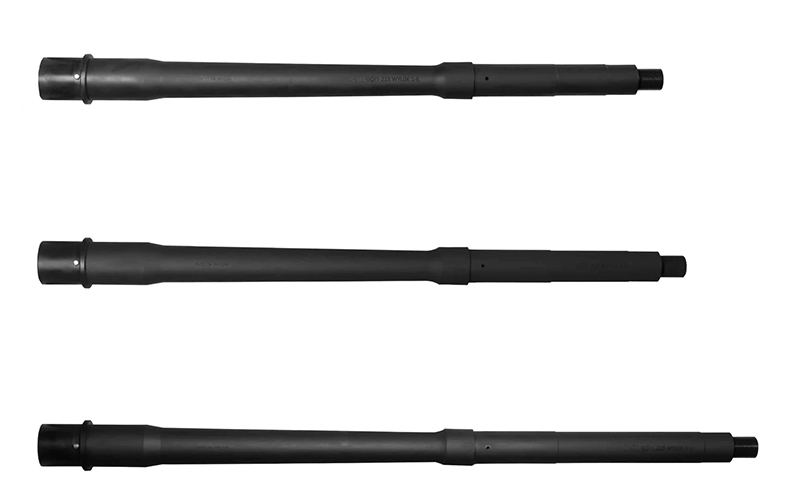
Criterion is one of the best barrel makers in the business. The company’s .223 Wylde Hybrid contour has a medium-weight barrel profile, giving you more rigidity than a pencil profile but less weight than a government profile.
Criterion’s barrels are made of 4150 CRV with a chrome-lined bore and phosphate finish, with mid-length gas and a 1:8 twist. Criterion hand-laps the rifling, and (if you purchase a bolt or BCG with the barrel) will even headspace your barrel to your bolt. They are available in 13.9-, 14.5- and 16-inch options and have an MSRP of $289 regardless of the length selected. Site: criterionbarrels.com
Rainier Arms UltraMatch Mod2

Rainier Arms match barrels have long been known to be among the finest available. The UltraMatch Mod2 series gets the utmost attention to detail, featuring hand-cut chambers and crowns, and precision machining with tight tolerances.
UltraMatch Mod2 barrels are stainless steel (brushed or polished), have a titanium-nitride barrel extension, Rainier's proprietary fluted mid-heavy profile and a 1:7.5 twist for stabilizing heavier projectiles. The barrels feature either mid- or rifle-length gas depending on barrel length, and options include 12-, 16-, 18- and 20-inch models. MSRP is $400 regardless of length. Site: rainierarms.com
Christensen Arms AR-15 Carbon Fiber Barrels
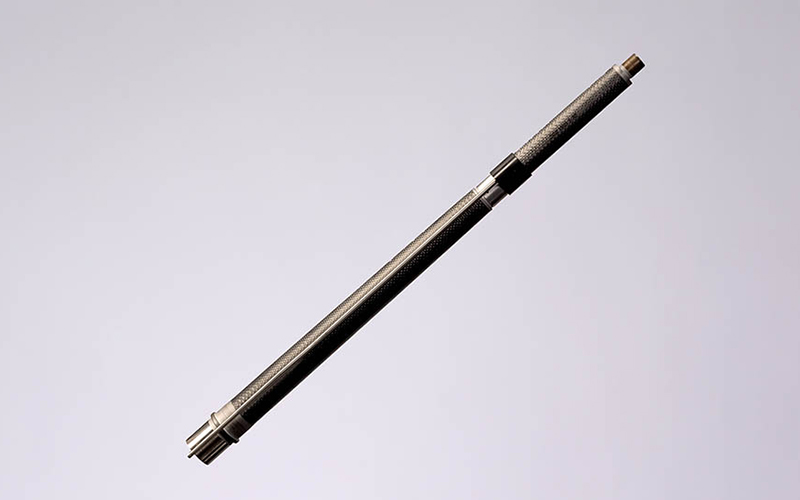
Christensen Arms is known for its carbon-fiber-wrapped match barrels. 416R stainless steel blanks are cut by hand, rifled and then chambered within .0001 inch and wrapped with carbon fiber to save weight and dissipate heat more efficiently than heavy profile steel barrels.
Christensen installs its own gas block and gas tube as well, but the company offers fewer options than most other manufacturers on this list. You can either choose a 10.5-inch barrel with a low-profile gas block, pistol-length gas and a 1:7 twist, or a 16-inch barrel with an adjustable gas block, mid-length gas and a 1:8 twist. MSRP is $749 for low-profile and $899 for the adjustable gas block model. Site: christensenarms.com
More AR Stuff:
- Top AR-15 Accessories And Upgrades
- Four Quick And Dirty AR Upgrades
- Choosing The Best AR Accessories
- Prioritizing Spending On Your AR-15 Build

Next Step: Get your FREE Printable Target Pack
Enhance your shooting precision with our 62 MOA Targets, perfect for rifles and handguns. Crafted in collaboration with Storm Tactical for accuracy and versatility.
Subscribe to the Gun Digest email newsletter and get your downloadable target pack sent straight to your inbox. Stay updated with the latest firearms info in the industry.

![Best Concealed Carry Guns In 2025 [Field Tested] Wilson Combat EDC X9S 1](https://gundigest.com/wp-content/uploads/Wilson-Combat-EDC-X9S-1-324x160.jpg)


![Best 9mm Carbine: Affordable PCCs [Tested] Ruger Carbine Shooting](https://gundigest.com/wp-content/uploads/Ruger-Carbine-Shooting-100x70.jpg)
![Best AR-15: Top Options Available Today [Field Tested] Harrington and Richardson PSA XM177E2 feature](https://gundigest.com/wp-content/uploads/Harrington-and-Richardson-PSA-XM177E2-feature-100x70.jpg)
